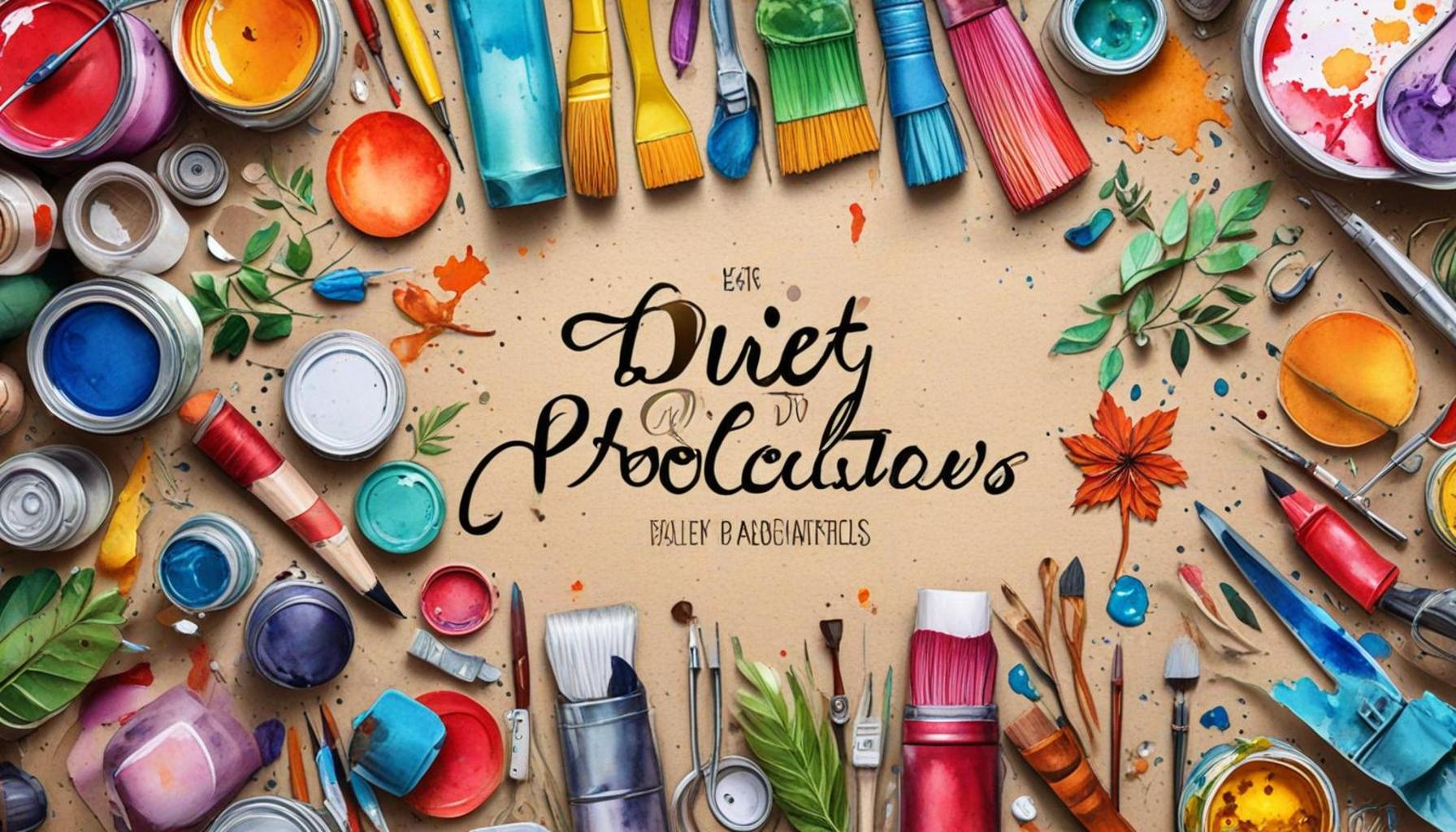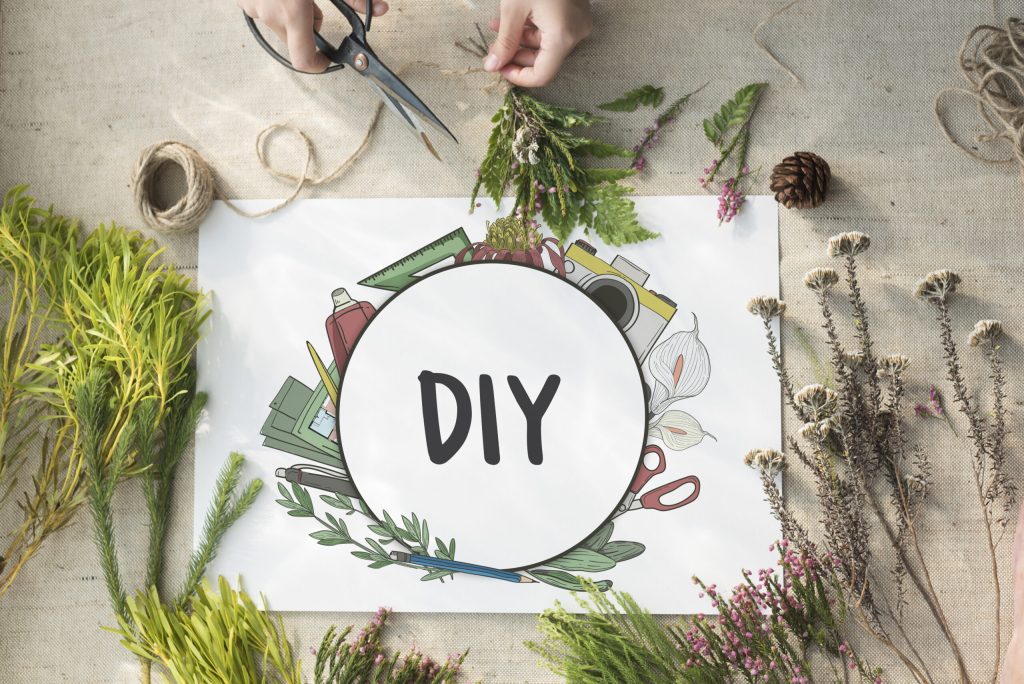DIY Art Projects: How to Create Sustainable Decorations Using Recycled Materials

Discover the Beauty of Recycled Art
In a world increasingly aware of environmental challenges, the pursuit of sustainability has never been more crucial. Creating sustainable decorations from recycled materials not only reduces waste but also allows for endless creativity. Imagine transforming everyday items, such as old jars, fabric scraps, or even worn-out furniture, into stunning decor pieces that not only beautify your space but also tell a unique story. Engaging in this practice fosters a sense of community and raises awareness about the importance of eco-friendly living.
Why Opt for DIY Art Projects?
- Environmental Impact: Repurposing discarded items is an effective way to combat increasing landfill waste. In the United States alone, recycling and composting prevented the release of 186 million metric tons of carbon dioxide equivalent into the air in 2018, as reported by the EPA. This shows that individual contributions truly stack up in the fight against climate change.
- Cost-Effective: By utilizing materials you already have at home, such as cardboard boxes or glass bottles, you can save money while getting crafty. For budget-conscious DIYers, this practice is not only practical but can also yield surprising and delightful results.
- Creative Expression: Engaging in DIY art projects allows you to showcase your personal style. Whether it’s creating intricate mosaics from broken plates or custom wall hangings from fabric remnants, each piece is a reflection of your personality and imagination.
Art projects using recycled materials can range from the simple to the intricate, catering to varied skill levels and interests. Some popular ideas include:
- Wall art made from old magazines or newspapers, where layered collages come alive with color and texture, perfect for home offices or children’s rooms.
- Furniture revamps using reclaimed wood or pallets, which have become increasingly popular in home decor. A discarded pallet can be transformed into a rustic coffee table or garden bench with just a bit of sandpaper and creativity.
- Decorative planters crafted from plastic bottles or tin cans, which can be painted or adorned with twine, showcasing your plants in a charming and sustainable manner. You’ll not only add greenery to your living space but also promote a green lifestyle.
Each project not only brings a sense of accomplishment but also contributes to a larger movement towards sustainable living. As individuals, we possess the power to make choices that positively impact our environment. Dive into the world of DIY art and discover how you can make a lasting positive impact through creativity, while also inspiring others in your community to join you in this rewarding journey.
DON’T MISS: Click here for fun DIY crafts
Getting Started with Sustainable DIY Art Projects
Embarking on a journey to create sustainable decorations using recycled materials can be a fulfilling endeavor that ignites your creativity while helping the planet. With a little imagination and resourcefulness, you can transform items destined for the landfill into eye-catching home decor. Below are some essential tips and techniques to kick off your DIY adventure effectively.

Gather Your Materials
The first step in any DIY art project is sourcing the materials. Look around your home for items that are no longer useful in their original form. Here are some common materials you can repurpose:
- Glass jars: Ideal for candle holders, vases, or storage containers.
- Old textiles: Use fabric scraps from clothing or furnishings to create unique wall hangings or patchwork pillows.
- Cardboard: Perfect for making decorative shapes, signs, or sculptural pieces.
- Plastic bottles: Transform them into plant pots, bird feeders, or trendy wall art.
- Furniture remnants: Old wood from furniture can become striking household pieces like shelves or tables with a little sanding and creativity.
Keep in mind that you can also visit local thrift stores or community recycling centers to find materials that others no longer need. This not only supports your crafting efforts but also encourages a circular economy within your community.
Choosing Your Projects
As you dive into the world of DIY art, it’s essential to choose projects that resonate with your personal style and skill level. Here are some beginner-friendly ideas:
- Collage Wall Art: Create stunning pieces by cutting images and text from old magazines or newspapers. Layer them on a canvas or sturdy cardboard to form vibrant artworks.
- Fabric Wall Hangings: Use various fabric scraps to weave or layer textures into beautiful tapestries. Not only do they add warmth to your space, but they also celebrate the beauty of upcycled materials.
- Reclaimed Wood Shelves: If you have access to old wooden planks, a simple sanding and a coat of paint can turn them into functional and stylish shelves.
When embarking on any DIY project, remember that the end goal is to let your creativity flow. Providing yourself the freedom to experiment and make mistakes is part of the process. Celebrate the imperfections, as they offer unique character to your creations.
By engaging with art projects that utilize recycled materials, you are not just enhancing your living environment but also becoming an advocate for a sustainable lifestyle. In a society that often prioritizes fast fashion and disposable items, your commitment to DIY art profoundly impacts your community and the earth.
| Advantage | Description |
|---|---|
| Cost Efficiency | Utilizing recycled materials minimizes expenses, making DIY projects accessible. |
| Environmental Impact | Promotes sustainability by reducing waste and conserving resources. |
Engaging in DIY art projects focused on sustainable decorations using recycled materials opens a world of creativity and environmental responsibility. The first significant advantage of this approach is its cost efficiency. By repurposing items that would typically be discarded, such as glass jars, old newspapers, and plastic containers, you not only save money but also unleash your creative potential. These projects can be tailored to suit any aesthetic, from rustic charm to modern minimalism.The second advantage is the profound environmental impact it yields. Every item you recycle reduces landfill waste, conserves natural resources, and decreases your carbon footprint. By choosing to create art from these materials, you’re empowering others to consider sustainable practices in their own lives, thereby fostering a broader culture of environmental awareness. This dual approach of creativity and conscientiousness makes for enriching experiences that extend far beyond mere decoration.
DISCOVER MORE: Click here to get inspired
Innovative Techniques for Transforming Recycled Materials
Once you’ve gathered your materials and selected projects that excite you, it’s time to dive into some innovative techniques that can elevate your DIY art projects. Here are a few methods to transform your recycled items into stunning decorations that can charm any room.
Upcycling with Paint and Adhesives
Paint is a transformative tool in the realm of DIY projects. Whether you are revamping an old piece of furniture or adding new life to glass jars, a fresh coat of paint can do wonders. Here are some ideas:
- Chalk Paint: Perfect for creating a rustic, matte finish on wood surfaces. It’s ideal for furniture restoration or for enhancing the look of picture frames made from reclaimed wood.
- Acrylic Paint: Versatile and colorful, acrylics can revitalize plastic bottles or canvas fabric. Use stencils to create patterns and designs that resonate with your personal style.
- Spray Paint: Quick and efficient, spray paint can cover surfaces evenly and can be very effective for globes made from paper mache or plastic.
In addition to paint, adhesives play a crucial role in the assembly of your items. Consider using recycled glue sticks or non-toxic adhesives that are environmentally friendly. Hot glue guns are also useful for quick fixes, especially when combining different materials for mixed-media projects.
Creating Unique Textures
Adding texture to your projects enhances their visual appeal and can be an excellent way to showcase your crafting skills. Here are some techniques to explore:
- Layering: Combining different materials creates depth. For example, layering fabric scraps can provide rich textures for wall hangings, while old newspaper or magazine cuttings can be layered for collage artwork.
- 3D Elements: Consider using scrap materials like bottle caps, buttons, or wood shavings to give your pieces a three-dimensional look. These elements can be attached to canvas, frames, or any flat surfaces to create dynamic effects.
- Tassels and Fringe: If you have leftover yarn or fabric, consider making tassels or fringes to decorate items such as woven wall hangings or plant hangers. This adds a playful touch that can brighten any decor.
Functional Art: Merging Aesthetics with Utility
Why not combine beauty and function? Many sustainable decorations can serve double duty. For instance:
- Planter Jars: Decorate glass jars with paints or twine, and use them as planters for herbs or succulents, providing both style and greenery in your home.
- Lampshades from Recycled Textiles: Create new lampshades using old t-shirts or fabric scraps. They not only add color to a room but also reduce waste while providing functional lighting.
- Cabinet Organizers: Repurpose old boxes and containers into organizers for your workspace. By painting or decorating them, you create eye-catching storage solutions that help maintain order.
Engaging in these creative processes allows you to explore your artistic side while embracing a lifestyle that values sustainability. Adding these personal touches to your home shows care for both the environment and the beauty of handmade art. Let your imagination guide you, and don’t hesitate to seek inspiration from nature or online communities dedicated to DIY art projects.
DISCOVER MORE: Click here to learn how music shapes our expressions
Conclusion: Embrace Creativity with Sustainable DIY Art Projects
In conclusion, engaging in DIY art projects using sustainable decorations made from recycled materials is not only a meaningful way to express your creativity but also a powerful step towards environmental stewardship. The techniques discussed—ranging from upcycling with paint to creating unique textures and functional art—offer endless opportunities to transform everyday waste into cherished decor that reflects your personal style.
By adopting these innovative methods, you can reduce your ecological footprint while beautifying your living space. Furthermore, the act of creating art from recycled materials fosters an appreciation for the resources we often take for granted, igniting a sense of responsibility towards our planet. The satisfaction gained from breathing new life into discarded items cannot be overstated; it connects us with the past, and reinvents our future.
So, gather your leftover materials, unleash your imagination, and take part in this rewarding journey of sustainable crafting. Whether you’re a seasoned artist or a curious beginner, the world of recycled art projects is inviting you to explore its possibilities. Join online communities, share your creations, and don’t hesitate to seek inspiration from others who embrace this vibrant lifestyle. Your next masterpiece is just a project away!
Related posts:
Coffee Painting: Transforming Your Coffee Experience into Visual Art
Discover Painting Techniques for Beginners Unleash Your Inner Artist
Explore Art with Recycled Materials Sustainable Creativity Unleashed
Creating Art with Light: Creative Photography Projects for Beginners
Creating Art with Sand: Techniques and Projects to Explore Textures and Colors
Exploring Digital Art: Tools and Techniques for Creating Virtual Works

Linda Carter is a writer and creative hobbies expert specializing in crafting, DIY projects, and artistic exploration. With extensive experience helping individuals discover their creative potential and bring their ideas to life, Linda shares her knowledge on our platform. Her goal is to empower readers with practical tips, inspiring ideas, and step-by-step strategies for success in the world of creative hobbies.